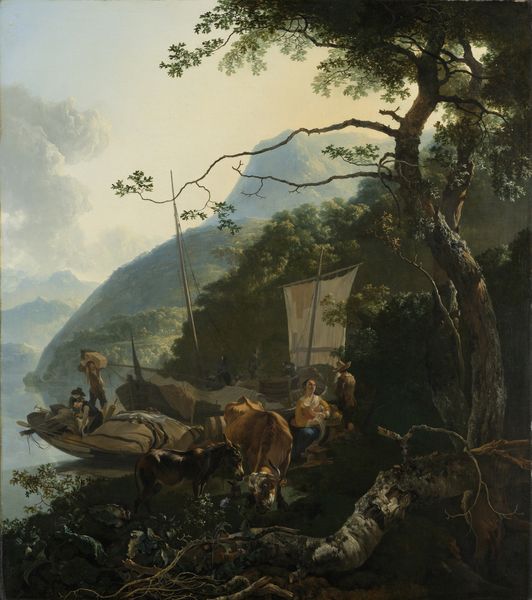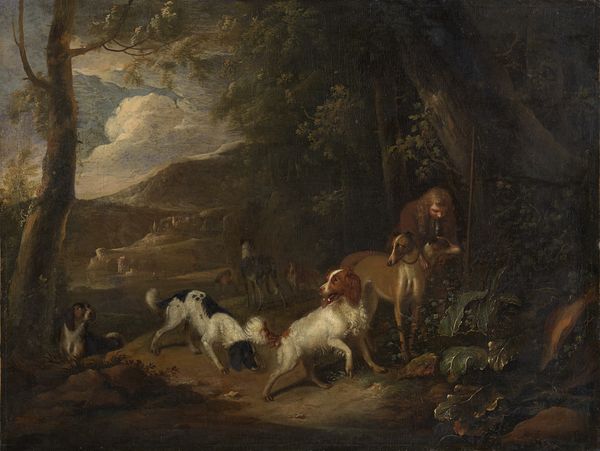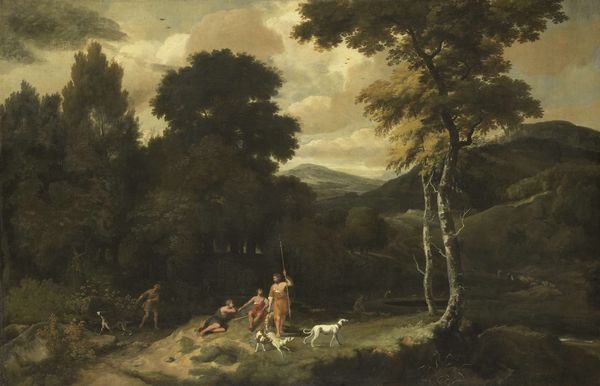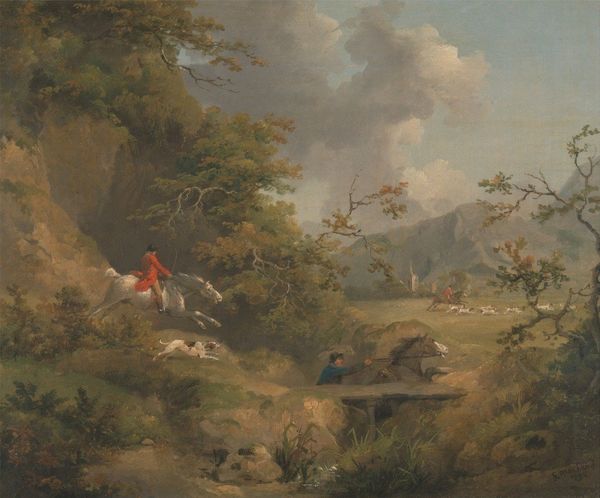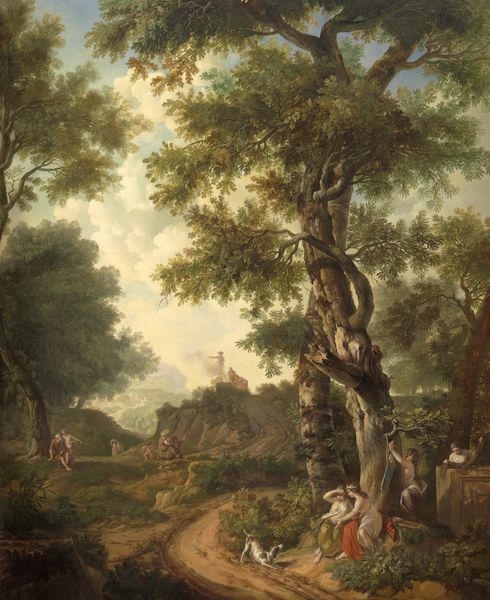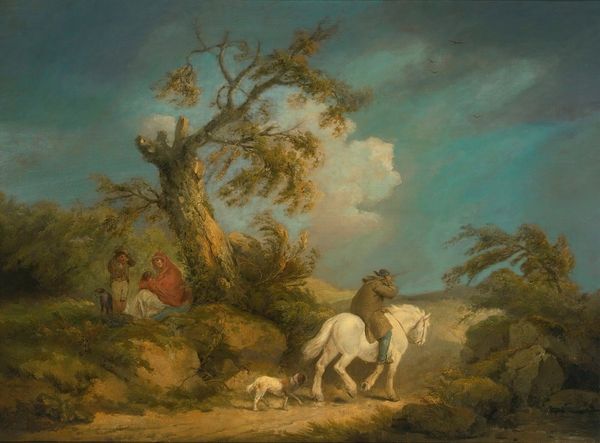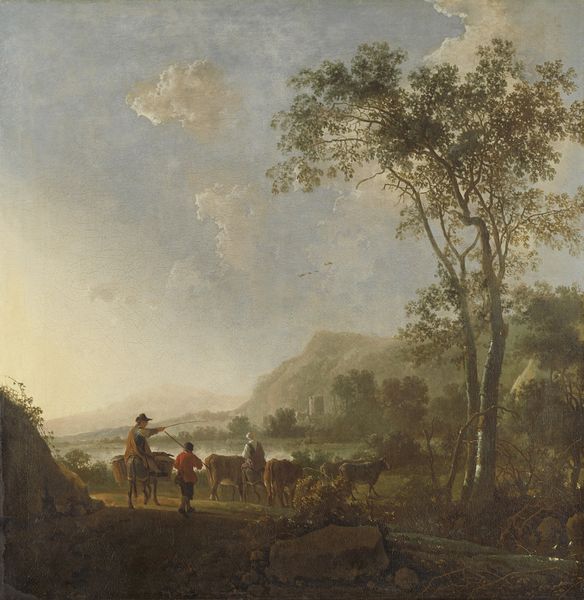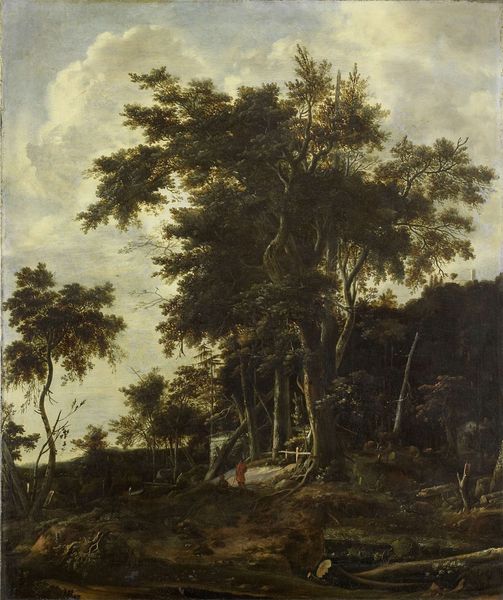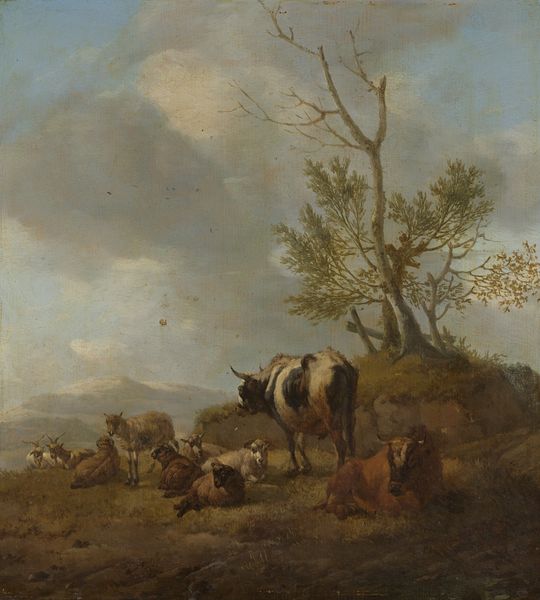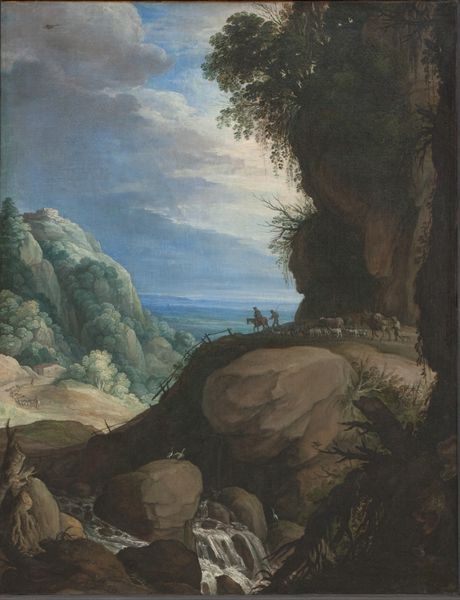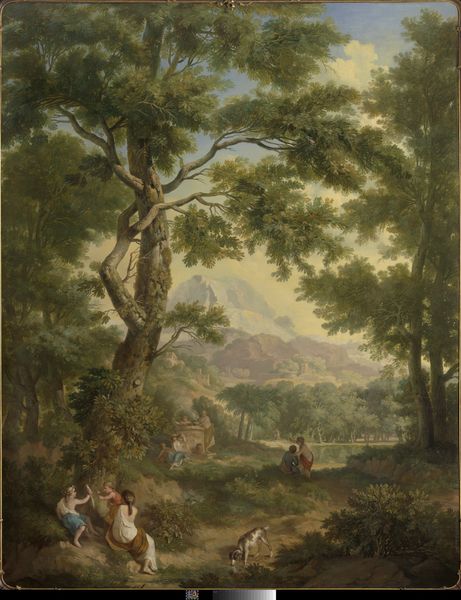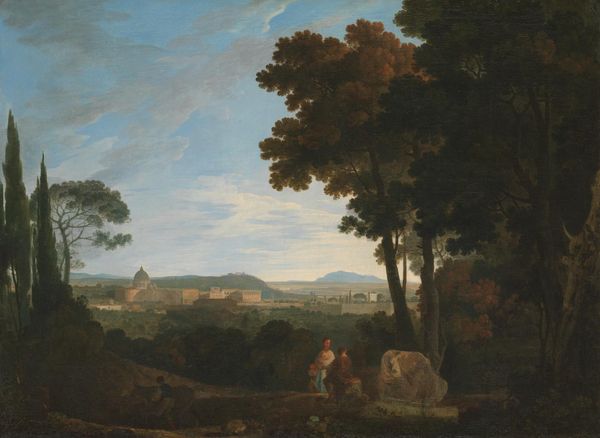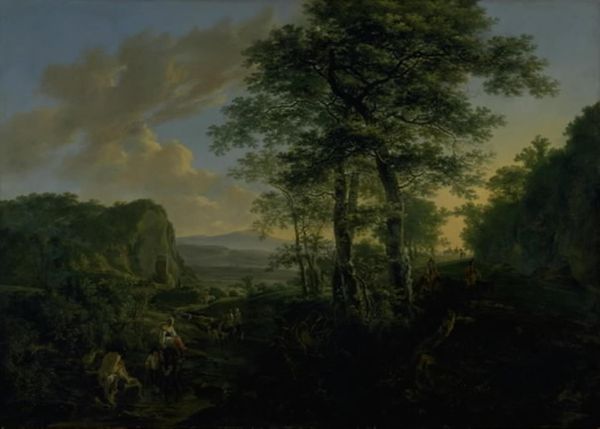
oil-paint
#
baroque
#
animal
#
oil-paint
#
landscape
#
oil painting
#
mountain
#
genre-painting
Dimensions: height 100 cm, width 86 cm, depth 7.9 cm
Copyright: Rijks Museum: Open Domain
Editor: We’re looking at Adam Pijnacker’s "A Shepherdess with Animals in a Mountainous Landscape," painted sometime between 1649 and 1673. It’s an oil painting, and I’m struck by how the landscape seems to dwarf the human figure. What do you see in this piece? Curator: I see a carefully constructed visual language at play. Notice how Pijnacker uses light and shadow, almost dramatically? The figures aren't just present; they're embedded in a cultural narrative about nature. What do animals, especially livestock, signify across different eras and cultures? Editor: Hmm, that’s a great point. They represent livelihood, obviously, but I guess here there’s also an element of pastoral ideal – a simpler, maybe romanticized life? Curator: Exactly. The sheep, goats, and cattle all contribute to this idea. The mountain itself symbolizes permanence, strength, a timeless quality that transcends individual human life. In the Baroque period, artists frequently used classical and religious themes, subtly linking them to everyday life. What emotional undercurrent do you sense here? Editor: A sense of tranquility, but also maybe… melancholy? Like humanity is small against this huge backdrop. Curator: That melancholic undertone speaks volumes about our human relationship to the environment, a sentiment echoed through centuries. This wasn’t just about depicting a pretty landscape, but imbuing it with meaning and symbolic weight, a feeling that's very relevant even now. Editor: I never thought about landscapes being so loaded with meaning. That’s a cool perspective. Curator: It highlights how artists use symbols to reflect on our place in the world, using the language of visual symbols as cultural memory, continuously renewed across generations.
Comments
No comments
Be the first to comment and join the conversation on the ultimate creative platform.

